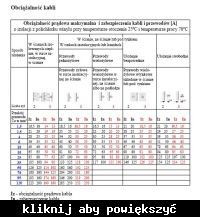Hello. I am writing here because I have an electrician problem. They installed a surface-mounted socket for me in the kitchen and connected it with a 7-meter long 3x1.5 cable in a strip to a 20-amp fuse. The oven and dishwasher are to be connected to it, together max. 4400W. I found a table that says that for such a cable, max. load is 15.5 A. Electricians initially agreed to replace, but finally came with their own table which said that the maximum load was 22A. Who is right then?



